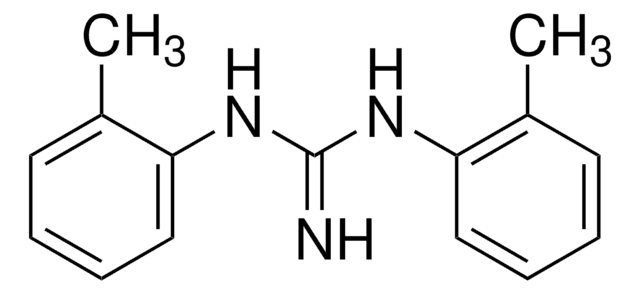Kluczowe dokumenty
230693
Zirconium(IV) oxide
powder, 5 μm, 99% trace metals basis
Synonim(y):
Zirconia
About This Item
Polecane produkty
Poziom jakości
Próba
99% trace metals basis
Formularz
powder
przydatność reakcji
reagent type: catalyst
core: zirconium
wielkość cząstki
5 μm
bp
5000 °C (lit.)
mp
2700 °C (lit.)
gęstość
5.89 g/mL at 25 °C (lit.)
Zastosowanie
battery manufacturing
ciąg SMILES
O=[Zr]=O
InChI
1S/2O.Zr
Klucz InChI
MCMNRKCIXSYSNV-UHFFFAOYSA-N
Szukasz podobnych produktów? Odwiedź Przewodnik dotyczący porównywania produktów
Powiązane kategorie
Opis ogólny
Zastosowanie
Kod klasy składowania
13 - Non Combustible Solids
Klasa zagrożenia wodnego (WGK)
nwg
Temperatura zapłonu (°F)
Not applicable
Temperatura zapłonu (°C)
Not applicable
Środki ochrony indywidualnej
dust mask type N95 (US), Eyeshields, Gloves
Wybierz jedną z najnowszych wersji:
Masz już ten produkt?
Dokumenty związane z niedawno zakupionymi produktami zostały zamieszczone w Bibliotece dokumentów.
Produkty
Innovation in dental restorative materials is driven by the need for biocompatible and natural-appearing restoration alternatives. Conventional dental materials like amalgam and composite resins have inherent disadvantages.
Global Trade Item Number
| SKU | GTIN |
|---|---|
| 230693-100G | 4061838782816 |
| 230693-2KG | 4061838782823 |
| 230693-500G | 4061838782830 |
Nasz zespół naukowców ma doświadczenie we wszystkich obszarach badań, w tym w naukach przyrodniczych, materiałoznawstwie, syntezie chemicznej, chromatografii, analityce i wielu innych dziedzinach.
Skontaktuj się z zespołem ds. pomocy technicznej




